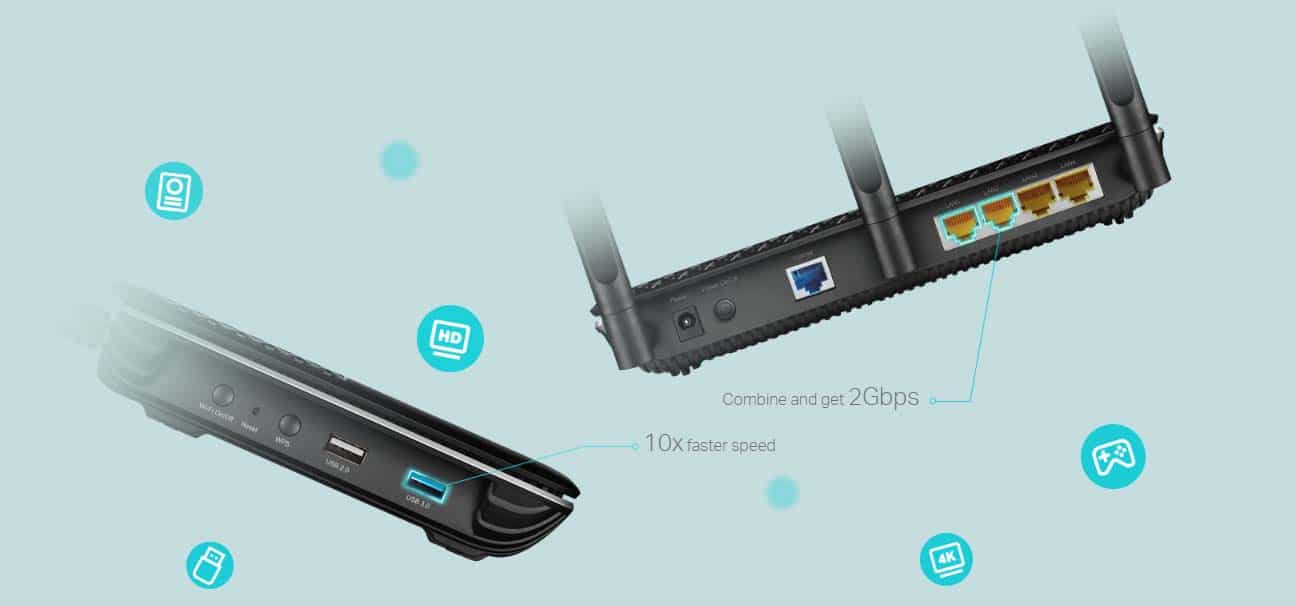

- HOW TO ACCESS USB DRIVE ON MAC WITH TP LINK ARCHER HOW TO
- HOW TO ACCESS USB DRIVE ON MAC WITH TP LINK ARCHER UPGRADE
For best results, you should get a dongle that's USB 3.x dongle and plug it into a USB 3 port, which has a theoretical max speed of 5Gbps (faster than any modern residential connection). USB 2.0 ports have a theoretical max speed of 480Mbps, but due to protocol overhead and hardware inefficiencies, you won't ever hit that value.
HOW TO ACCESS USB DRIVE ON MAC WITH TP LINK ARCHER UPGRADE
It's not a bad idea to get a dongle that's a little faster than your network speed now, in case you upgrade in the future.Īnother hardware limitation is the USB port you plug the dongle into. If you're not sure what speed comes into your home, log into your account with your ISP and check your plan, then test your home network speed to see what you actually get. Instead, it might be 150Mbps on the 2.4GHz band and 450Mbps on the 5GHz band, for a "total" of 600Mbps.īe sure to get a dongle that lives up to your internet plan's maximum speed on the band you plan to use. A dongle labeled as supporting 600Mbps probably doesn't support that much throughput per band. They aren't pretty, but if you rely on Wi-Fi to get work done on your desktop, they're worth the investment and are an easy way to make your Wi-Fi dongle perform better.įirst are the dongle's specifications. If you're using an old nano dongle, you should upgrade to a Wi-Fi dongle with an external antenna. This difference is one of several ways that your Wi-Fi dongle can affect the internet speed you get on your device. You can point them towards the router for even better reception, and as discussed above, they aren't as close to the internal electronics of your PC. This is because external antennas often have higher gain, which results in better signal reception. While internal antennas have come a long way and aren't terrible, external antennas generally provide better performance. An example of this is TP-Link's N150 USB Wi-Fi Adapter. Plus, internal antennas are cheaper to produce, so compact dongles are more affordable. It's years since I had my hands on a Mac, but it wouldn't surprise me if it can do both, but it would be worth checking the appropriate ones are enabled (these days I'd be really surprised if they were not.) From you Mac what you are doing is "mounting networked storage" such as described here.Nobody wants a massive antenna sticking out of their device. There are basically two network sharing protocols, one called CIFS or SMB (different names for the same thing) one called NFS. When connecting to remote storage over a data network from your Mac, it's not relevant that the storage happens to be connected to the router using USB (or anything else) - that will all be "hidden" behind the network sharing protocols (though your router may choose to name it "USB," but that's just a coincidence.)
HOW TO ACCESS USB DRIVE ON MAC WITH TP LINK ARCHER HOW TO
Again, time to check the router manual to see how to do this.


Then you may need to create some named "Shares" pointing to your storage so that the router know what names to advertise onto the network. Then there may be some settings in the router that need to be enabled to just fundamentally "turn on" network sharing. The router manual may tell you which it supports. In OSX go to File Manager -> Shared pane or Network folder -> -> Router name -> drive or partition name In Linux / Ubuntu follow these. There are many, many disc formats and not everything can read/write everything else. I don't know any of your kit, but here's a few "general" things to check:įirstly make sure you have formatted the drive using a disk format that the router (not your Mac) can read/write.


 0 kommentar(er)
0 kommentar(er)
